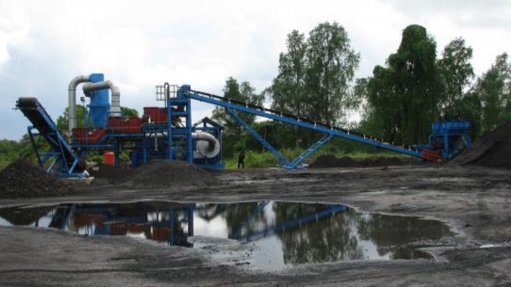
WET COAL CHALLENGE Indonesian coal can contain up to 50% moisture, which significantly reduces its combustibility
Engineered solutions provider ELB Engineering Services will likely start construction of a 250 t/h coal-drying plant during the first quarter of 2016 at a coal mine in Indonesia and the project is expected to take 12 to 18 months to complete, says ELB process engineer Bea Moolman.
Indonesia is one of largest thermal coal producers worldwide and about 60% of the country’s coal consists of subbituminous coal, which contains less than 6 000 kcal/kg.
“This type of coal generally has a very low ash content but a very high moisture content. “Some of Indonesia’s coal can contain up to 50% moisture, which significantly reduces its combustibility,” Moolman explains.
The profitability of a power plant is driven by the quality of the coal that is fed into the plant, as it affects the power output, operating and maintenance cost as well as waste disposal costs.
Therefore, Moolman highlights, it is crucial that the coal’s moisture levels be reduced, as this will increase the calorific value (CV) and decrease shipping costs, owing to the reduction in the weight of the coal.
ELB undertook drying testing on the Indonesian coal, using centrifuges and direct heat blowing, to assess which worked best to improve the coal’s CV. The tests found that there was very little value gained from using centrifuges on the Indonesian coal.
“Using the heat drying method, we found that the coal’s CV increased by about 30% after 180 seconds exposure to hot air at 60 °C, with a weight loss of up to 6%, owing to moisture reduction,” Moolman notes.
Plant Development
ELB developed a pilot coal drying plant based on these results. The 20 t/h test plant was designed to use 50 mm coal and was manufactured and tested in South Africa before it was delivered to Indonesia last year, where it was erected at the client’s mine.
Moolman explains that the feeder dryer plant dries the coal using heated air that is generated in the burner and is fed by a blower while being transported. Fine coal is extracted from the feeder dryer system and fed into the burner for heat generation to significantly reduce the power requirements, she adds.
Therefore, the plant currently uses a combination of diesel and pulverised coal to generate the heat to dry the coal. However, Moolman says, the commercialised, scaled-up version of the plant will not use the diesel-fired heaters – instead, fines from the coal will be used in a cyclone to generate heat, which will see the company save significantly on fuel expenses.
“The lignite coal drying plant will reduce the coal’s moisture level by about 20%, thereby providing for a 1 000 kcal/kg increase in the coal’s heating value. “This will create an additional profit of $10/t on the coal for the Indonesian coal miner,” she concludes.